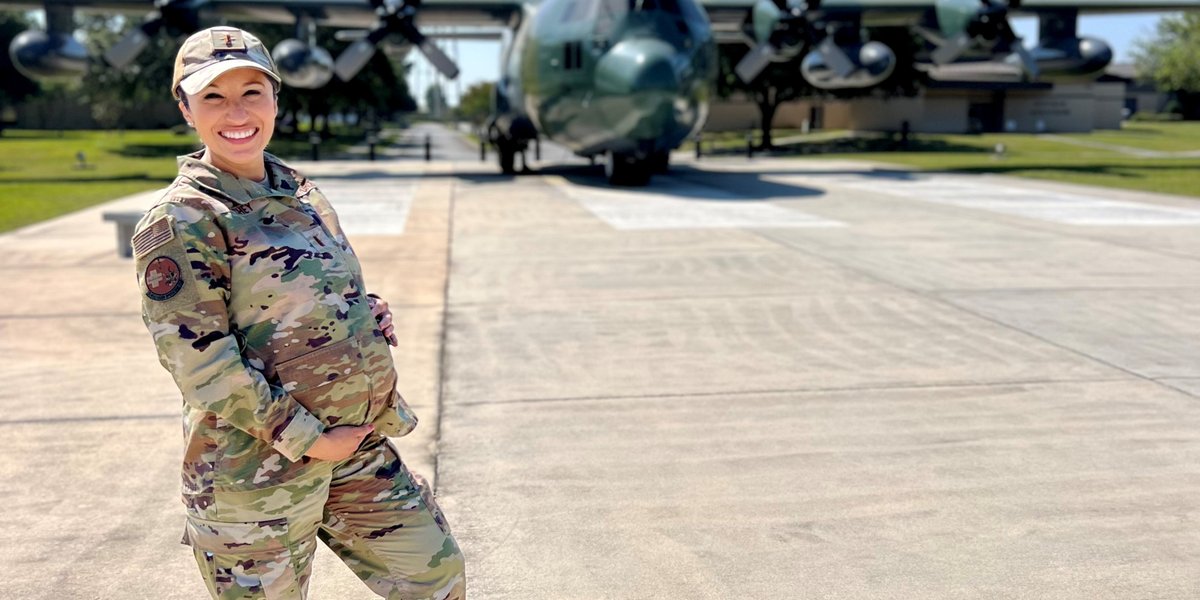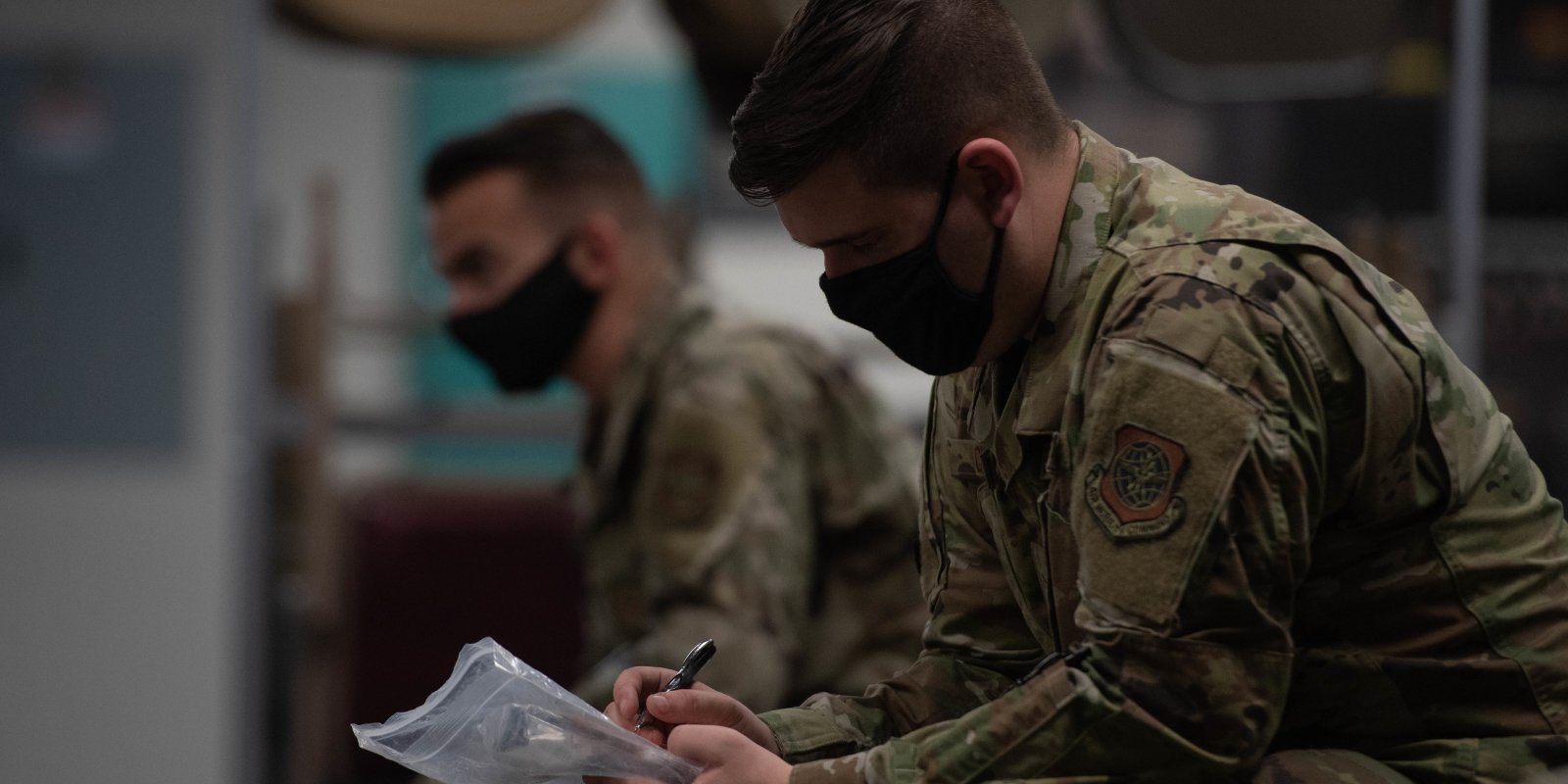EXPECTING IN UNIFORM: THE 2026 MATERNAL HEALTH GUIDE FOR ACTIVE-DUTY SERVICE MEMBERS

There's no such thing as "perfect timing" when it comes to pregnancy, especially when you're wearing the uniform. One week you're tracking mission readiness and body composition standards, and the next you're timing prenatal appointments between field exercises or ship schedules. That moment you learn you're expecting isn't just emotional. It's operational, whether you want to keep serving through birth and beyond or want to make sure you don't miss out on essential benefits.
This guide breaks down exactly what active-duty service members can expect in 2026, with current information on maternity leave, TRICARE coverage, fitness and deployability, base-care gaps, and what every new parent should have on their checklist.
From Pregnancy Test to Delivery: What Happens First
Finding out you're expecting while serving doesn't trigger automatic separation. It triggers planning.
The first thing you'll want to do is notify your command and schedule an appointment with your Primary Care Manager (PCM) at a Military Treatment Facility (MTF) or, by referral, at a civilian facility for a confirmed pregnancy evaluation.
Once a provider confirms pregnancy:
- A pregnancy profile is issued, outlining physical training and duty limitations as needed.
- You're entitled to medically necessary prenatal care covered under TRICARE.
- Convalescent leave and 12 weeks of parental leave planning will officially begin after birth.
You don't have to figure all of this out alone. Every service branch has updated policies to support pregnancy and postpartum service, especially since the rollout of the Department of Defense's Military Parental Leave Program (MPLP).
Parental Leave in 2026: The Standard Is 12 Weeks
Under the current Military Parental Leave Program (MPLP), all eligible service members receive 12 weeks of non-chargeable parental leave for birth, adoption, or long-term foster placement.
Birth parents receive 12 weeks of leave after a 6-week maternity convalescent leave period, which is a medical benefit separate from MPLP.
Quick facts:
- Parental leave applies to both birth and non-birth parents.
- Leave may be taken in blocks or all at once, pending command approval.
- Leave must be used within 1 year of birth or qualifying placement.
- MPLP applies across all branches and replaces the primary/secondary caregiver model.
Once approved, parental leave is protected and does not impact accrued annual leave. But unit planning is key, especially if both parents are service members.
What TRICARE Covers During Pregnancy and Postpartum
For active-duty members and dependents enrolled in TRICARE Prime:
- Prenatal appointments, labor and delivery, and postpartum care are fully covered at no cost.
- Care is provided at an MTF when available or through a civilian network provider when referred.
- Coverage extends to medically necessary OB ultrasounds, lab work, emergency care, and newborn screenings.
Additional benefits:
- A TRICARE-covered manual or electric breast pump and supplies after birth.
- Mental health counseling and referrals.
- Breastfeeding support through certified lactation providers.
One catch: Pregnancy is not a Qualifying Life Event (QLE) that allows you to change health plans.
However, childbirth is. You'll have 90 days from delivery or adoption to update your TRICARE enrollment, add a dependent, or opt into a different plan.
Fitness, Profiles & Deployability: What Changes and What Doesn't
Pregnancy doesn't end your career, but it does temporarily alter how you serve:
- You'll receive approved exemptions from specific physical fitness and weight standards.
- Deployment and field restrictions apply by service branch and trimester.
- After birth, there is a medically determined period before you return to fitness testing, typically alongside a temporary postpartum profile.
Service members should work closely with both their medical provider and their command to create a plan that maintains medical safety and unit readiness.
Army: Pregnancy & Postpartum Policy
The U.S. Army's parenthood, pregnancy, and postpartum guidance allows pregnant Soldiers to continue serving with modified duty based on medical profiles.
Pregnancy no longer delays promotions or career progression. Soldiers are exempt from body composition tests for 365 days postpartum and may delay the Army Combat Fitness Test (ACFT) until cleared by medical providers.
Commanders must accommodate lactation space and schedule considerations for postpartum service members.
Navy: Pregnancy & Sea Duty
Navy policy states that pregnant Sailors may not remain on a deploying vessel past the 20th week of pregnancy without a waiver. Early pregnancy reporting is essential for reassignment and personnel planning.
Pregnant Sailors receive fitness exemptions and postpartum support, including time and space for breastfeeding. Parental leave planning is standardized under MPLP and applies to both parents, regardless of assignment.
Air Force/Space Force: Pregnancy & Postpartum Policy
The Department of the Air Force outlines pregnancy and postpartum guidance with flight and occupational profiles tailored to mission requirements.
Pregnant Airmen and Guardians on flying status may be medically grounded and temporarily reassigned.
Postpartum service members receive 12 months of exemption from physical fitness testing and full access to lactation support. Pregnancy does not affect promotion eligibility, and family care resources are available through installation support centers.
Marine Corps: Maternal Readiness & Deployability Rules
The Marine Corps pregnancy policy supports continued service with duty limitations. Pregnant Marines are exempt from the Physical Fitness Test (PFT) and Combat Fitness Test (CFT) and may be reassigned from high-risk occupational roles.
Marines receive a 12-month postpartum deferral from deployment and are entitled to parental leave and lactation accommodations. Commanders are responsible for balancing unit readiness with maternal health needs.
Coast Guard: Medical & Operational Standards
As part of the Department of Homeland Security, the Coast Guard follows the Military Parental Leave Program and provides pregnancy profiles and fitness exemptions tailored to operational environments.
Pregnant members are removed from ship or deployment duties lacking adequate medical support. Postpartum fitness and weight standards are waived until medically cleared, and TRICARE coverage applies for prenatal, delivery, and postpartum care. Early care planning is essential at remote or civilian-based installations.
Base Care Gaps: What to Know Before You Deliver
Not every installation offers labor and delivery services, neonatal care units, or OB/GYNs on staff. Some expectant service members, especially those stationed overseas or at remote U.S. bases, will be referred to civilian hospitals.
What this means for you:
- Find out early whether your MTF offers complete maternity care or only prenatal outpatient services.
- You may need a referral for routine or specialty OB care.
- Civilian facilities may be farther away or involve out-of-pocket travel to appointments.
Planning early reduces stress. Ask your PCM, "If I were to deliver today, where would I go?"

Growing a family while serving a country is its own dual mission. You're adapting, planning, carrying, and preparing for a new life, all while holding the line you swore to defend. Whether you choose to serve for four more years or step away after maternity leave, you deserve clarity, dignity, and full access to your benefits along the way.
Suggested reads:
Natalie Oliverio
Veteran & Senior Contributor, Military News at MyBaseGuide
Natalie Oliverio is a Navy Veteran, journalist, and entrepreneur whose reporting brings clarity, compassion, and credibility to stories that matter most to military families. With more than 100 publis...
Natalie Oliverio is a Navy Veteran, journalist, and entrepreneur whose reporting brings clarity, compassion, and credibility to stories that matter most to military families. With more than 100 publis...
Credentials
- Navy Veteran
- 100+ published articles
- Veterati Mentor
Expertise
- Defense Policy
- Military News
- Veteran Affairs
SHARE:



